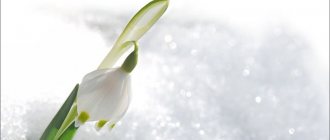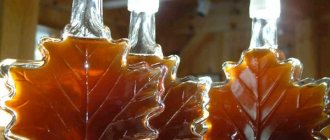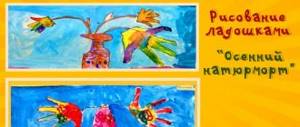Nature has its own pantry that helps people be healthy. Forests and fields offer us their medicinal herbs, tree bark and fruits, berries and honey. These remedies will cure colds, relieve pain, and improve your mood.
Many expensive chemical medicines can be replaced with medicinal herbs, but it is important to remember that only an experienced doctor can prescribe to the patient exactly those folk remedies that will help him. Herbs are an effective treatment, but if used incorrectly, they can harm a person.
Rose hip
Rose hips look like roses; some types of rose hips are called Rose. But for medicinal purposes, it is not the flowers that are used, but the rosehip berries. Fresh or dried berries are brewed with boiling water like tea in a saucepan, and the saucepan itself is covered with a warm blanket so that the water does not cool down longer. After a few hours, the rose hips will give all the beneficial substances to the water and the drink will cool down. This rosehip infusion looks similar to regular black tea. The taste of the drink is very pleasant and refreshing. And its main advantage is a large amount of vitamins, which is why doctors often recommend drinking it for colds or to strengthen the immune system.
Project on the surrounding world with presentation “Plants in Winter”, 2nd grade
Project on the surrounding world with a presentation for primary schoolchildren “Plants in winter”, 2nd grade
Author: Matveeva Kristina, 8 years old, student of 2B grade of the Municipal Autonomous Educational Institution Multidisciplinary Lyceum No. 20 of Ulyanovsk. Head: Svetlana Nikolaevna Matveeva, primary school teacher, teacher of the highest category. Description of work: We bring to your attention a project on the surrounding world. This material will be useful to students, teachers, and, of course, parents. The material can be used both in educational and educational work with children, including in country and school camps, as well as in class hours and in extracurricular activities. Goal: organize and conduct observations of plants in the winter season. Objectives: - introduce three types of plants; — continue to develop knowledge about deciduous and coniferous trees, shrubs, herbs; - develop horizons, imagination, thinking, erudition.
Project progress
Winter came!!! We go to a nearby park.
There are three types of plants: trees, shrubs and herbs. Trees are divided into coniferous and deciduous.
Conifers are spruce, pine, larch, etc. All of them, except larch, are evergreen. But larch sheds its needles in winter. In winter, coniferous plants ripen seeds - cones . Deciduous trees - birch, poplar, oak, etc. In winter, the bark protects the plants from frost.
Shrubs are lilac, cotoneaster, etc. In winter, the bushes are bare. Grasses are wormwood, ears of corn, etc. Some grasses die in winter. And others continue to grow under the snow. These are strawberries, cranberries, etc. Snow, like a blanket, covers them and prevents them from freezing.
Scientists have proven that the air temperature under snow is 15 degrees higher!!!
Conclusion and conclusions:
What beautiful plants in our park in winter! Beneath them lie deep and clean snowdrifts. The trees, bushes and grass seemed to have fallen asleep in a fairytale dream...
Poems about plants in winter
Silver, lights and sparkles - A whole world made of silver!
Birches are burning in pearls, black and naked yesterday. This is the realm of someone's dreams, These are ghosts and dreams! All objects of old prose are illuminated with magic. Crews, pedestrians, white smoke on the azure. The life of people and the life of nature are full of new and holy things. The embodiment of dreams, Life is a game of dreams, This world of charms, This world of silver! V. Ya. Bryusov Thank you for your attention!
Presentation on the topic: Plants in winter
We recommend watching:
Miniature for elementary school “Fairy Tales of the Brothers Grimm” Lesson summary for students in grades 2-3 on the topic: Winter Scientific research work of a 2nd grade student Research work, 2nd grade. Profession "Teacher" in my family
Similar articles:
Summary of winter leisure activities for children in grades 3-4
Poems about winter by Russian poets for 3rd grade children
Prishvin "Birds under the snow"
Nosov “Thirty grains”
Koval "Snow Rain"
Licorice
Another name for licorice is sweet root. It is the sweet roots of this plant that people have used since ancient times to combat coughs. To do this, they took crushed dried roots and boiled them in boiling water. The resulting product was cooled and drank little by little throughout the day.
In some other countries, licorice is called licorice and is used to make chewy candies with a very unusual taste. Such sweets help cope with nausea during motion sickness in transport and make breathing easier during colds.
Project: Medicinal plants of our region"
Project
"Medicinal herbs of the native land"
Completed by 4th grade students
Head: Sotnikova A.F.
Project goals:
creating conditions for introducing children to the world of medicinal plants of the Voronezh region, forming ideas about the importance of plants in improving and preserving human health.
Project objectives:
1. Clarify and expand children’s knowledge about the names of medicinal plants, their health value, and rules of use.
2. Introduce the variety of medicinal plants, the rules for their collection and storage.
3. Enrich your vocabulary, expand your knowledge about medicinal plants.
4.
Foster a caring attitude towards nature.
Problematic issues:
- What benefits do medicinal plants bring?
- Can a person's life change with the disappearance of medicinal plants?
- What needs to be done to stop the process of plant extinction?
- What role do plants play in nature and human life?
- What benefits do medicinal plants bring?
- What folk recipes do you use when you are sick?
Predicted result:
- Know what medicinal plants grow in our region.
- Where are medicinal plants used?
Relevance
A person has long noticed that some plants cure ailments.
Historical information has been preserved that the medicinal properties of plants were used three thousand years ago in China and Egypt.
Recently, people have become so keen on collecting such plants that they have begun to disappear; some are listed in the Red Book. Medicinal plants must be protected!
2. World of medicinal plants of the Voronezh region
— Our region is rich in medicinal plants. Medicinal plants contain active substances that affect our body.
— We will introduce you to some of them now.
Chamomile officinalis
The Russian name chamomile appeared in the 18th century.
In Russian folk medicine, an infusion of flower baskets is used as an infusion for gastritis, liver disease, kidney disease, colds, the nervous system, and insomnia.
Chamomile should be used only as prescribed by a doctor.
Dandelion
Within our country, 208 species of dandelions have been described.
In Russian folk medicine, dandelion was considered a “vital elixir”; it is used to improve digestion, a sedative, and is useful for jaundice and insomnia.
Plantain
It has long been noticed: whether a person rubs his foot with uncomfortable shoes, hurts his hand, or gets burned by a spark from a fire, all he has to do is apply a clean young plantain leaf to the sore spot, the pain subsides, and the wound begins to heal quickly. That is why in Rus' plantain is called “porannik”, or “boil grass”.
The plant constantly accompanies humans. The American Indians called it “the white man’s footprint” because the leaves pressed to the surface resemble a footprint.
Preparations from the leaves are used for gastritis and acute intestinal diseases.
The juice of freshly picked plantain leaves has a positive effect on wound healing.
Clover
Clover is a well-known meadow plant.
It is often mentioned in fairy tales and stories.
Clover blooms beautifully with bright, crimson cones. But this cute little flower has tremendous power and benefits. This was known hundreds of years ago, and to this day clover is included in many medicinal herbal preparations. Clover is even compared to ginseng, it helps so well.
Red clover is an ancient medicine against cancer. Stems, leaves, roots and flowers are used for treatment.
Stinging nettle
Nettle is the oldest medicinal plant. Used for rheumatism and fever, nettle also stops blood well.
Nettle juice is used for liver stones, kidney stones, and lung disease. This plant contains vitamins C, K, and carotene.
In folk medicine, nettle infusions are used for skin diseases, for gargling with sore throats, and as a means of strengthening hair.
Coltsfoot
The bright yellow flower is unsightly:
There is a cold surface on top of the leaves,
Below is a gentle velvety layer,
As if he would touch a mother kindly.
Healing properties
Coltsfoots were valued in folk medicine of Ancient Greece.
Translated from Latin, its generic name reads as “dispelling cough.” Indeed, recipes using the plant to treat all types of coughs, from smoker’s chronic bronchitis to colds, have gained the greatest popularity at all times. Coltsfoot found particular distribution in breastfeeding.
Celandine
In folk medicine, celandine is used as a medicinal herb both internally and externally. Based on celandine, decoctions, infusions, ointments, and tinctures are prepared.
Celandine has anti-inflammatory properties.
Celandine has diuretic and choleretic properties.
Celandine has analgesic healing properties.
The herb celandine cures scabies, heals wounds, bruises, celandine is used to remove calluses.
Celandine has antibacterial, antifungal, antiviral properties.
Yarrow
The plant is well known to traditional healers for its medicinal properties. Yarrow is an unpretentious flower; it is the progenitor of many ornamental varieties for the garden, distinguished by its bright colors and hardiness.
Yarrow has antibacterial and anti-inflammatory properties. The plant has a positive effect on human internal organs.
Yarrow is used as a wound-healing, bactericidal and antiallergic agent.
An infusion of the plant is used to increase blood clotting and reduce the risk of blood clots. Yarrow also helps with burns. In addition, the plant can reduce the heart rate.
You just need to not be lazy,
You just need to learn
Finding plants in the forest
Those that are useful for people -
And all diseases will recede!
Instructions for collecting medicinal herbs:
- What to collect? You need to know exactly the plant and which parts to collect.
- When to collect? Medicinal plants have medicinal powers during certain months.
- How to collect? Stock up on everything you need in advance.
- Where to collect? Do not collect near roads, city dumps, in places treated with pesticides and where there are few plants.
- When collecting, save. Take only as much as you need and dry properly.
Rules for the proper collection of medicinal plants.
- You cannot pick plants for bouquets.
- You can collect medicinal plants in places where there are many of them.
- When collecting medicinal plants, you must leave some of them in nature so that they can reproduce.
- There are rare plants that cannot be picked at all.
- You need to know which parts of plants have medicinal value.
It is extremely important for medicinal herbs not only to dry properly, but also to store correctly, observing all conditions and terms. The healing properties of herbs are lost over time and if mishandled.
Rules for storing medicinal herbs:
- You cannot store different herbs together; each type should be given a separate place.
- Separately, it is necessary to store individual parts of one plant (leaves, flowers, roots, etc.), since they have different shelf life.
- The most ideal for storing herbs are cardboard boxes, wooden boxes, baskets, linen bags or paper bags, since they allow air to pass through.
- Periodically, the herbs need to be checked, inspected, and sorted. If you find mold, then the supplies should be thrown away; they will no longer be of any use.
- Be sure to sign the plants. Any container must indicate the name of the plant, as well as the date of collection or purchase.
Herbs retain their healing properties for an average of 2 years,
fruits - up to 3 years, bark and roots - up to 5 years.
Conclusion:
During the work on the project, we learned to distinguish and recognize plants by their external signs, became acquainted with their medicinal value, rules for collection and storage, and identified measures for preserving medicinal plants in nature.
The work helped to understand that plants are part of nature and people should treat it with care.
Protect the environment! Bless you!





